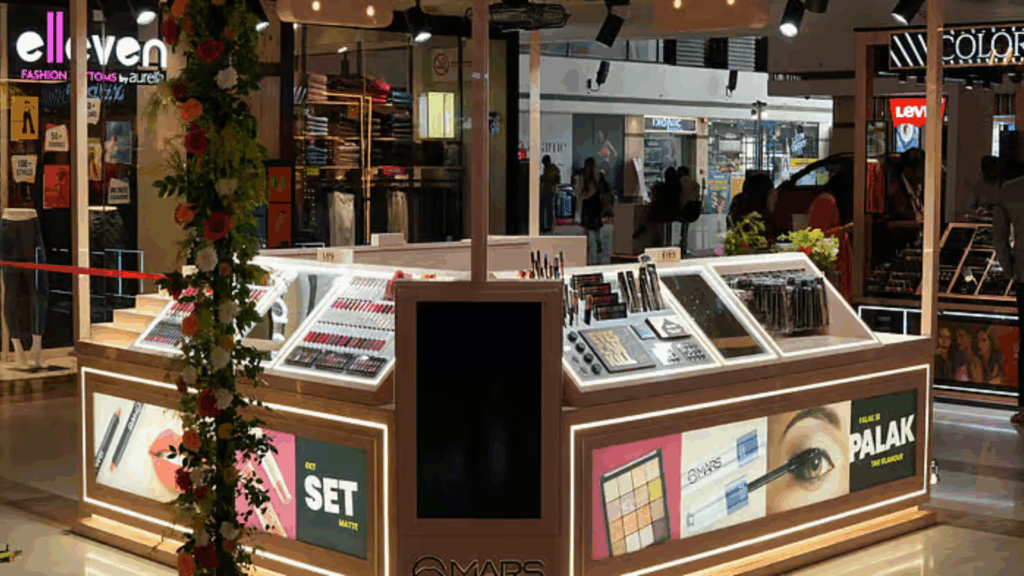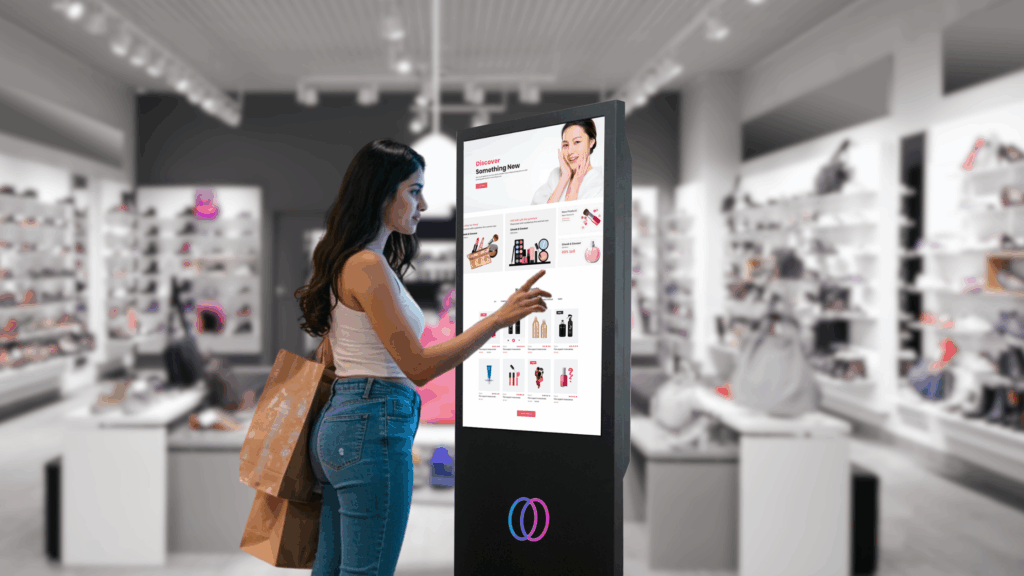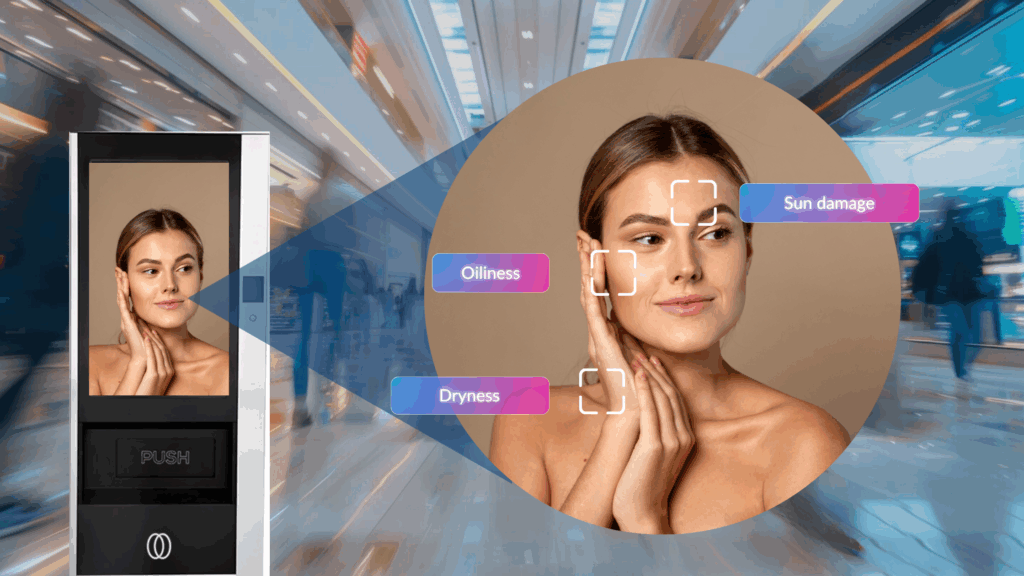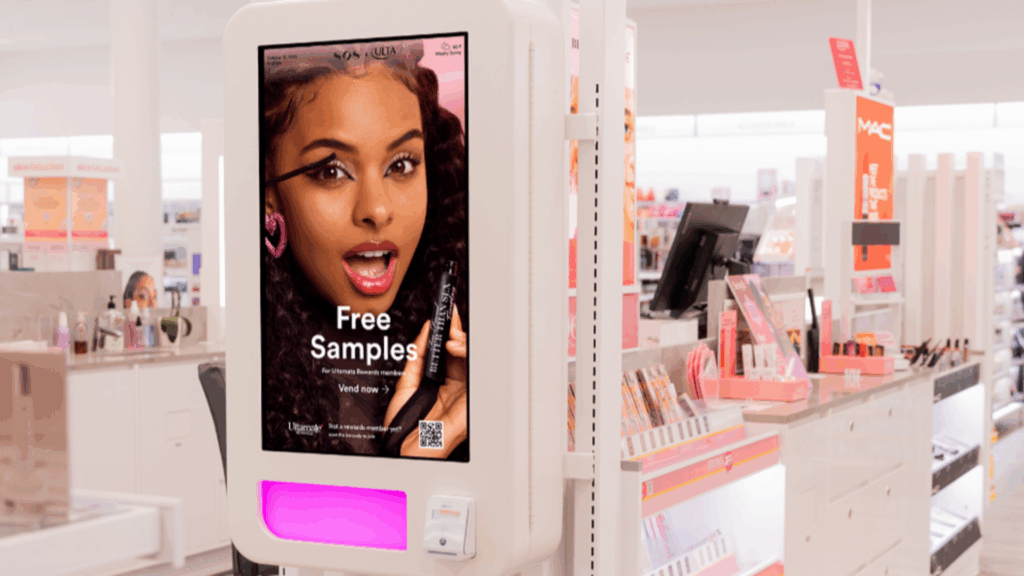Retail, once dominated by expansive brick-and-mortar out-lets and department chains, is now, metamorphosing into a petite and surprisingly effective avatar. Beauty retail kiosks and mini pop-ups are thus, the new norm in the beauty industry signifying a micro-retail trend that prioritizes agility, engagement, experience and innovation.
As per statistics, the D2C cosmetic brand kiosks market which was valued at $1.5billion (USD) in 2024, is expected to grow at 7.9% CAGR (period 2025 – 2033), displaying a steadily shifting consumer behavior toward speed, personalization, control over the purchase process and quality of experiences while interacting with the brands.
Cosmetic pop-up stores and kiosks are popping up everywhere; from airports to art fairs, music events and college campuses to high-street corners, metro stations and bus terminals. What many may consider just a trend, is in reality, a strategic move that is unlocking phenomenal opportunities for brands both big and small to connect, elevate and eternalize their brand impact.
What Are Cosmetic Kiosks and Mini Stores?
The difference lies in scale and staffing—while kiosks are often self-service and automated, mini stores typically offer some degree of human interaction. Both, however, are far more cost-efficient and flexible than traditional storefronts.
Cosmetic Kiosks –
Cosmetic kiosks are compact, often tech-enabled retail units placed in high-footfall areas.
They are characterized by
- Smart vending machines, that dispense curated beauty products (like Essie at airports https://www.glamour.com/story/essie-nail-polish-vending-machine)
- Unmanned digital kiosks with touchscreens, product recommendations and cashless checkout
- Temporary experiential pop-up counters
- Typically located in malls, airports, transit hubs and corporate lobbies
- Ideal for quick purchases, travel essentials or impulse buys
Mini Stores –
These are small-format physical stores, generally under 500 sq. ft. area, offering a highly curated selection of a brand’s product line.
Mini stores are in-demand for offering
- Full brand control with immersive interiors and signage in a small space
- Staffed counters and personalized consultations
- Focus on bestsellers and new launches
- Fast service without sacrificing the in-store experience
- Often found on high-street corners, inside malls or as standalone mobile units
How D2C Cosmetic Brand Kiosks and Mini-Stores Differ from Traditional Cosmetic Stores –
Conventional stores occupy large retail spaces, have widespread shelves with extensive product lines (bestsellers and Slow moving), employ more human staff and call for frequent all-inclusive maintenance. High up-front and operational costs thus, makes it expensive to run, reducing profit margins significantly. At the same time, fixed locations make them accessible only to a fixed section of customers, limiting their reach to areas with more sale potential.
Cosmetic kiosks and mini stores on the other hand, stand out owing to,
- Smaller footprints, leading to lower rent and operational costs
- Agility, for quick set up
- Focus on fast moving products
- Hyper-focused inventory, avoiding clutter and decision fatigue
- High-tech integrations for better CX
- Strategic placement in non-traditional retail zones
- Speed, shareability and convenience, which appeal to modern consumers

Why the Shift Toward Micro-Retail?
There are 5 key reasons why micro retail is an accelerating trend.
- Skyrocketing Retail Costs – Retail rent globally has risen significantly, making large store formats expensive for many brands.
- Labour cost inflation – Compensation costs for workers in India rose significantly across all industries for period ending March 2025 (https://labour.gov.in/sites/default/files/Chapter%20-%2017.pdf)
- Demand for Convenience & Speed – Over 60% of Gen Z consumers prefer shopping experiences that are quick, curated and digitally enhanced. Micro-retail perfectly aligns with the expectation.
- Low-Risk Market Entry & Testing – Micro-retail allows brands to test new locations and product lines with minimal commitment. It’s perfect for seasonal campaigns, exclusive drops and pilot runs.
- On-the-Go Culture – In high-footfall hubs like airports, time-strapped consumers crave instant access to beauty/grooming essentials. Cosmetic kiosks fill this gap, turning travel downtime into sales opportunities.

Benefits of Beauty Retail Kiosks for Cosmetic Brands
- Lower Setup & Operational Costs – Industry estimates state cosmetic kiosks can cost way lesser to launch (1lakhs to 5lakhs approx. depending upon size and type, https://www.ndtvprofit.com/business/for-beauty-brands-upmarket-kiosks-spell-lesser-cost-more-visibility) than a traditional retail store which can cost anywhere from 8.9 lakhs to 25lakhs + ( https://franchisebhoomi.com/blog/cosmetic-business-india/#:~:text=The%20total%20investment%20to%20start,logistics%2C%20and%20a%20contingency%20fund).
- Hyper-Targeted Brand Positioning – Micro-stores allow brands to tailor product offerings by location, demographic or events generating targeted sales.
- Greater Brand Visibility – Cosmetic pop-up stores in high-traffic zones draw constant attention, making it perfect for D2C brands to win cost-effective buzz.
- Scalability & Agility – Kiosks allow brands to pivot quickly, relocate easily or shut down without heavy sunk costs.
- Data Collection at the Source – Smart kiosks equipped with CRM and analytics tools, enable brands to gather real-time customer behavior data for personalized marketing and future strategy.

Locations That Work Best
High-footfall locations like malls, airports and urban corners make ideal spots for D2C cosmetic brand kiosks and mini stores, offering visibility, accessibility and impulse purchase opportunities. These compact formats also thrive at beauty expos, college campuses and events, where discovery and convenience drive immediate engagement.
Technology & Innovation in Mini Beauty Stores
Technology is the secret sauce turning beauty retail kiosks into big experiences:
- Touchless Trials – Hygienic solutions like non-contact testers and motion-sensor product demos in the kiosks and pop-up stores keep customers safe and engaged.
- Smart Mirrors & Virtual Try-Ons – Using AR and VR, brands can offer real-life digital makeovers, boosting conversion rates by up to 20% or more while, customers using AR are 30% more likely to make the purchase (Ref)
- Mobile Payment And Loyalty Integration – Fast, seamless checkout via UPI, QR codes and mobile wallets along with loyalty integration is now the baseline.
- Inventory & CRM Tools – These tools allow D2C cosmetic brand kiosks to track stock, personalize offers and sync with all platforms of presence, ensuring a consistent omnichannel journey.

Examples of Brands Winning with Micro-Retail
- Sephora – Sephora’s mini-store formats at airports and in department stores offer curated products and engaging services that retain their brand image. Sephora had started opening mini set-ups within JC penny stores. Within 2019, the brand had 660 touchpoints with JC Penny (https://www.shopify.com/retail/what-is-micro-retail
- Ulta Beauty – The brand launched SOS smart vending machines in 10+ locations to facilitate next-gen sampling for friction-free product discovery (https://www.retailcustomerexperience.com/articles/ulta-beauty-pilots-smart-vending-for-in-store-product-discovery-experience)
- Glossier – This cult-favorite D2C brand used traveling pop-ups to reach new markets and create FOMO-fueled hype, often drawing queues around the block.
Smaller indigenous brands like SUGAR Cosmetics and SkinQ have also used micro-retail to enter premium spaces cost-effectively and successfully.

Are Beauty Retail Kiosks the Future of Beauty Retail?
Yes. As customer’s interaction preferences with brands mature, the necessity of blending online ease with offline engagement has become infinitely relevant. Micro-retail allows brands to:
- Create memorable, sensory brand moments for sky-rocketing CX.
- Test, tweak and evolve beauty brand activation strategies faster.
- Reach customers in non-traditional yet impactful locations.
With evolving buyer-behaviors and rising operational costs; smaller, flexible and cost-effective retail formats are poised to become a permanent part of the retail mix.
Final Thoughts
‘As they say, the best things come in small boxes…’
Cosmetic kiosks and mini stores are not just space-savers; they’re opportunity multipliers. For established players, they offer precision and cost-efficiency. For startups, they’re a gateway to visibility, growth and deeper customer relationships.
In a world where retail is becoming more experiential and adaptive, micro-retail isn’t just a trend; it’s a blueprint for the future of beauty.

